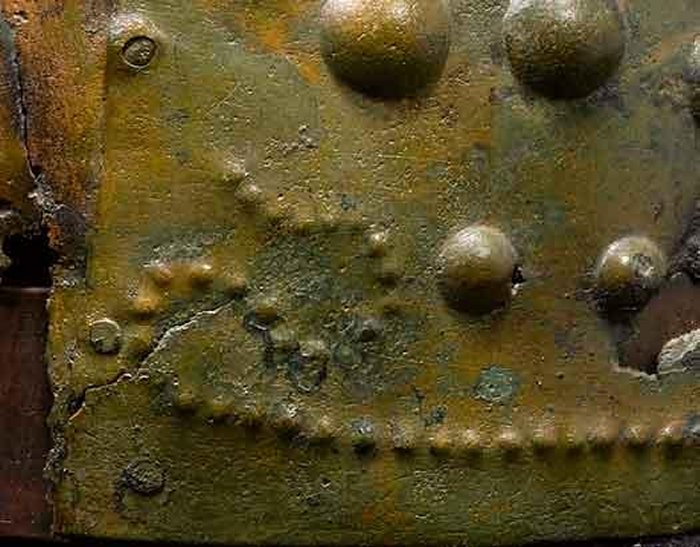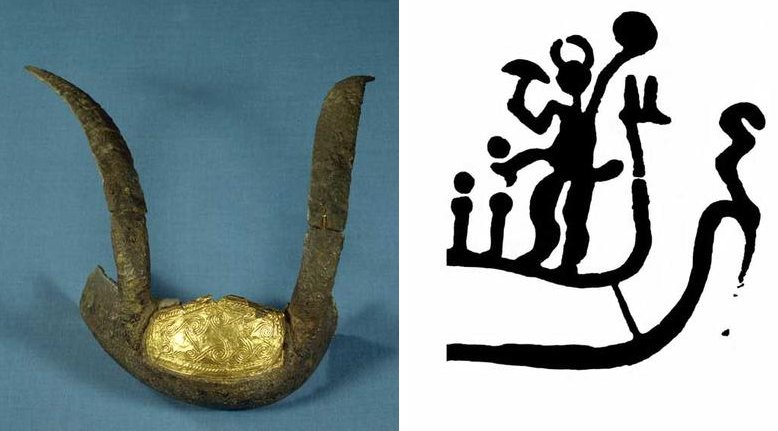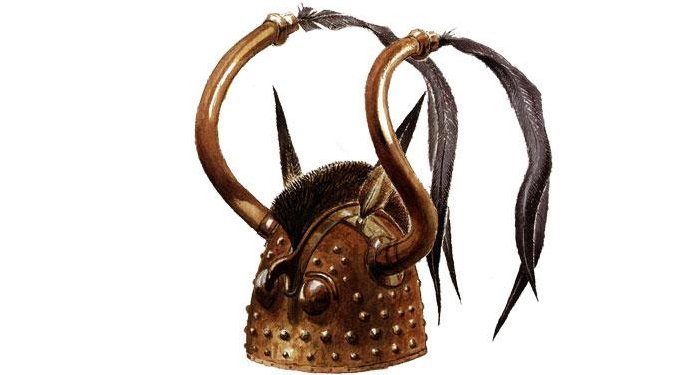Mysterious Bronze Age Viksö Helmets With Horns Related To Myths, Holy Animals And Divine Power
Ellen Lloyd - AncientPages.com - The mysterious Bronze Age Viksö helmets with horns were discovered in southern Scandinavia.
Due to their impractical size and shape, these ancient helmets were not used for war or fighting. Instead, the Viksö helmets were deliberately created for various religious ritual purposes. The elaborate carvings on the helmets have symbolic meaning, and the objects are rich in spiritual meaning and most likely related to myths about holy animals and divine power.
Left: Credit: National Museum of Denmark - Right: The horned helmets of two men's heads on a horse collar from Fogdarp in Scania, Sweden, bear a strong resemblance to the Viksø helmets. Among others, the two men are furnished with curved beaks on their foreheads. Late Bronze Age. Credit: National Museum of Denmark
Scientists think these unique Bronze Age artifacts functioned both as helmets and masks. The Viksö helmets are unique.
Ancient Pages has previously presented several truly bizarre and fearsome ancient helmets, but the Viksö helmets differ significantly and were not designed to scare any enemy.
Some of them are equipped with eyes and a hooked beak. The hooked beak of a bird of prey and the large, round eyes perhaps indicate an owl.
The helmets have manes like horses, and the horns on the helmets relate to the ox.
Viksö helmets
Feathers from a crane or another large bird could be stuck into the two small cylindrical fittings and in the ends of both horns.
The Bronze Age people had a reason to incorporate all these different animals into the design of the helmets. However, the entire purpose behind these helmets is still a matter of speculation.
Sun Symbol In Norse Mythology
We also know that Sun worship was essential, and the picture of the Sun Ship on the helmets from Viksö refers to a central myth in Bronze Age religion.
Along the edge at the base of the helmets are stylized ship pictures made out of a row of minor hammered dents. On each helmet are two ships, which stretch from the front to the back of the helmet. The ship's prow is furnished with a water bird – duck, swan, or grebe. The Sun Ship is the most important religious symbol of the Bronze Age.
Bronze figure from Glasbacka in Halland, Sweden. The figure probably wears a mask with a hooked bird's beak. Late Bronze Age.
The waterbird had a special significance in the Bronze Age perception of the Sun's continual cycle. The bird could follow the Sun and its light in all places and environments. It could dive underwater, swim, walk on the earth, and fly in the sky.
The symbol of the Sun can often be found in Norse mythology. This is the myth of the Sun's eternal journey round and round, with the help of the Sun Ship. The other important helper on this journey is the sun horse, which pulls the Sun across the sky.
The horse, the noblest and holiest of all animals, is represented on the helmets in the form of a mane. The ox, represented by the horns, can symbolize strength and wealth. In many religions, the ox is also a sacred symbol.
Along the edge of the helmets, stylized ship pictures can be seen. The prows resemble water birds.
The bird of prey, which constitutes the masks on the helmets, may also be connected to the Sun's eternal journey myth. If it is an owl, this probably relates to night-time. Finally, the added feathers from the crane, which can also be seen in Bronze Age rock carvings from Sweden, may be connected to changing the seasons. The crane is the largest and most beautiful of the migratory birds.
Two small intriguing figurines were discovered in the 18th century at Grevensvænge, near Næstved, Denmark. It is assumed that the figurines have initially been part of an ensemble arranged on a ship.
The men wear helmets with curved horns like those from Viksö. Only one of the figures is preserved today, but old drawings of the find show that the two men initially knelt beside each other, and each had a sizeable ornamental axe in one hand.
Left: mask from The Early Bronze Age, furnished with bronze horns and golden application, was found at Hagendrup in western Zealand. Credit: National Museum of Denmark
Right: Part of a rock carving from Sotetorp, Bohuslän in Sweden. The man on board the ship wears a horned helmet. Credit: National Museum of Denmark
The same motif, of kneeling men wearing helmets and carrying axes, is depicted on a razor from Vestrup in south Zealand. The men are sitting in a boat.
This is how the Viksø helmets may have looked—illustration by Anders Andersson.
Ships, helmets, and ornamental axes were all used for religious activities in the later Bronze Age. The combination of men with helmets and axes is also found on Swedish rock carvings. The warriors on the rock carvings from Sotetorp at Tanum in the Bohuslän area are helmet-clad and carry axes. They also have swords at the hip and hold a round object in the other hand. The round object may represent the Sun.
Both the twins' motive and the cultic significance of the horned helmets seem to have persisted into the early Germanic culture. The kneeling warrior figures have been interpreted as the "Ashvins" type divine twins of early Indo-European religion, sons of the sky god, known by Alcis to Tacitus.
Updated on August 30, 2024
Written by Ellen Lloyd – AncientPages.com Staff Writer
Copyright © AncientPages.com All rights reserved. This material may not be published, broadcast, rewritten or redistributed in whole or part without the express written permission of AncientPages.com
More From Ancient Pages
-
 The 5,500-Year-Old Underground Rock Settlement With Illuminated Galleries In Ancient City Of Hadrianopolis, Turkey
Archaeology | Sep 18, 2023
The 5,500-Year-Old Underground Rock Settlement With Illuminated Galleries In Ancient City Of Hadrianopolis, Turkey
Archaeology | Sep 18, 2023 -
 Ancient Biblical Manuscript M.910 We Are Afraid To Open May Contain A Surprise
Archaeology | Feb 19, 2018
Ancient Biblical Manuscript M.910 We Are Afraid To Open May Contain A Surprise
Archaeology | Feb 19, 2018 -
 World’s Oldest Wine Found In 2,000-Year-Old Roman Tomb In Carmona, Spain
Archaeology | Jun 19, 2024
World’s Oldest Wine Found In 2,000-Year-Old Roman Tomb In Carmona, Spain
Archaeology | Jun 19, 2024 -
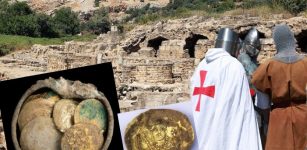 Treasure Hoard Of Rare Gold Coins From The Crusader Conquest Discovered In Caesarea, Israel
Archaeology | Dec 8, 2020
Treasure Hoard Of Rare Gold Coins From The Crusader Conquest Discovered In Caesarea, Israel
Archaeology | Dec 8, 2020 -
 Archery Technology Emerged In The Americas 5,000 Years Ago – Much Earlier Than Previously Thought
Archaeology | Dec 21, 2023
Archery Technology Emerged In The Americas 5,000 Years Ago – Much Earlier Than Previously Thought
Archaeology | Dec 21, 2023 -
 Vikings Brewed Beer With Heated Stones – Old Tradition Popular In Germany, Finland And Baltic States
Archaeology | Dec 14, 2017
Vikings Brewed Beer With Heated Stones – Old Tradition Popular In Germany, Finland And Baltic States
Archaeology | Dec 14, 2017 -
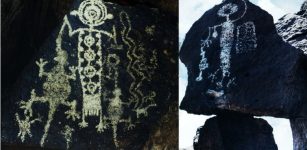 Mysterious Coso Petroglyphs In California – Made By Whom And For What Reason?
Featured Stories | Dec 31, 2020
Mysterious Coso Petroglyphs In California – Made By Whom And For What Reason?
Featured Stories | Dec 31, 2020 -
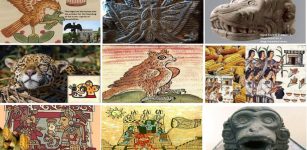 10 Aztec Symbols Explained
Ancient Symbols | Mar 20, 2018
10 Aztec Symbols Explained
Ancient Symbols | Mar 20, 2018 -
 The Seal Of Solomon, The Fifth Element And The Andromeda Constellation Reveal An Intriguing Connection
Ancient Mysteries | Mar 8, 2018
The Seal Of Solomon, The Fifth Element And The Andromeda Constellation Reveal An Intriguing Connection
Ancient Mysteries | Mar 8, 2018 -
 Illapa: Powerful Master Of Clouds, Rain And Hail – Worshipped By Inca People
Featured Stories | Jul 7, 2016
Illapa: Powerful Master Of Clouds, Rain And Hail – Worshipped By Inca People
Featured Stories | Jul 7, 2016 -
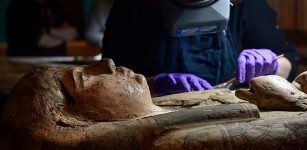 Never-Before-Seen 3,000-Year-Old Paintings Of Egyptian Goddess Amentet Discovered Inside Coffin Of A Mummy
News | Apr 7, 2020
Never-Before-Seen 3,000-Year-Old Paintings Of Egyptian Goddess Amentet Discovered Inside Coffin Of A Mummy
News | Apr 7, 2020 -
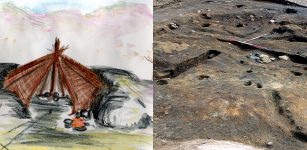 Stone Age People Lived In Reused Houses – Not Just Caves – Discovery In Norway Reveals
Archaeology | Jan 26, 2018
Stone Age People Lived In Reused Houses – Not Just Caves – Discovery In Norway Reveals
Archaeology | Jan 26, 2018 -
 19th Century Mass Grave With Hundreds Decapitated “Vampires” Discovered In Polish Village
Archaeology | Jun 23, 2023
19th Century Mass Grave With Hundreds Decapitated “Vampires” Discovered In Polish Village
Archaeology | Jun 23, 2023 -
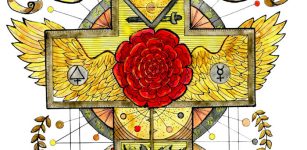 Rosicrucians: Facts And History About The Mysterious Secret Society
Featured Stories | Oct 20, 2016
Rosicrucians: Facts And History About The Mysterious Secret Society
Featured Stories | Oct 20, 2016 -
 Enoch – The Initiator – Pre-Flood Messenger Of God
Ancient Mysteries | Oct 5, 2015
Enoch – The Initiator – Pre-Flood Messenger Of God
Ancient Mysteries | Oct 5, 2015 -
 Strange Tale Of Mysterious Thousand-Year-Old Underground Network Of Caves And Encounters With Subterranean Dwellers
Ancient Mysteries | Jul 13, 2022
Strange Tale Of Mysterious Thousand-Year-Old Underground Network Of Caves And Encounters With Subterranean Dwellers
Ancient Mysteries | Jul 13, 2022 -
 Did Lead Pollution Cause IQ Declines Among Ancient Romans?
Places | Jan 8, 2025
Did Lead Pollution Cause IQ Declines Among Ancient Romans?
Places | Jan 8, 2025 -
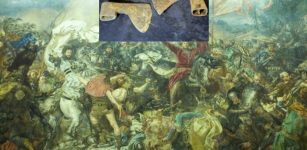 600-Year-Old Axe Heads Used In The Battle Of Grunwald Found in Poland
Archaeology | Sep 1, 2020
600-Year-Old Axe Heads Used In The Battle Of Grunwald Found in Poland
Archaeology | Sep 1, 2020 -
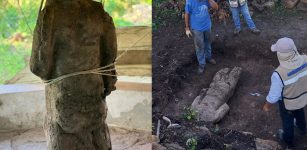 Headless Statue Of Life-Size Ancient Mayan Warrior Discovered In Mexico
Archaeology | Dec 12, 2022
Headless Statue Of Life-Size Ancient Mayan Warrior Discovered In Mexico
Archaeology | Dec 12, 2022 -
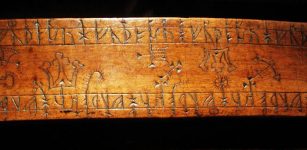 Vikings And The Runic Calendar
Artifacts | Mar 4, 2016
Vikings And The Runic Calendar
Artifacts | Mar 4, 2016




